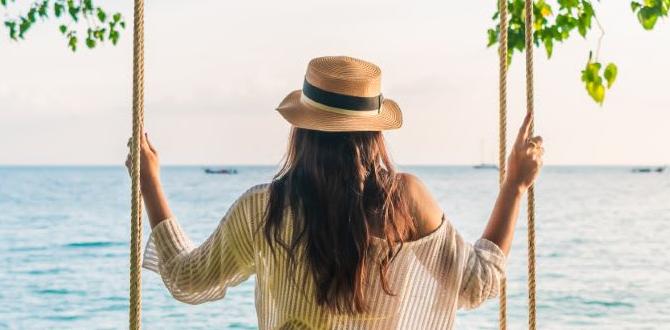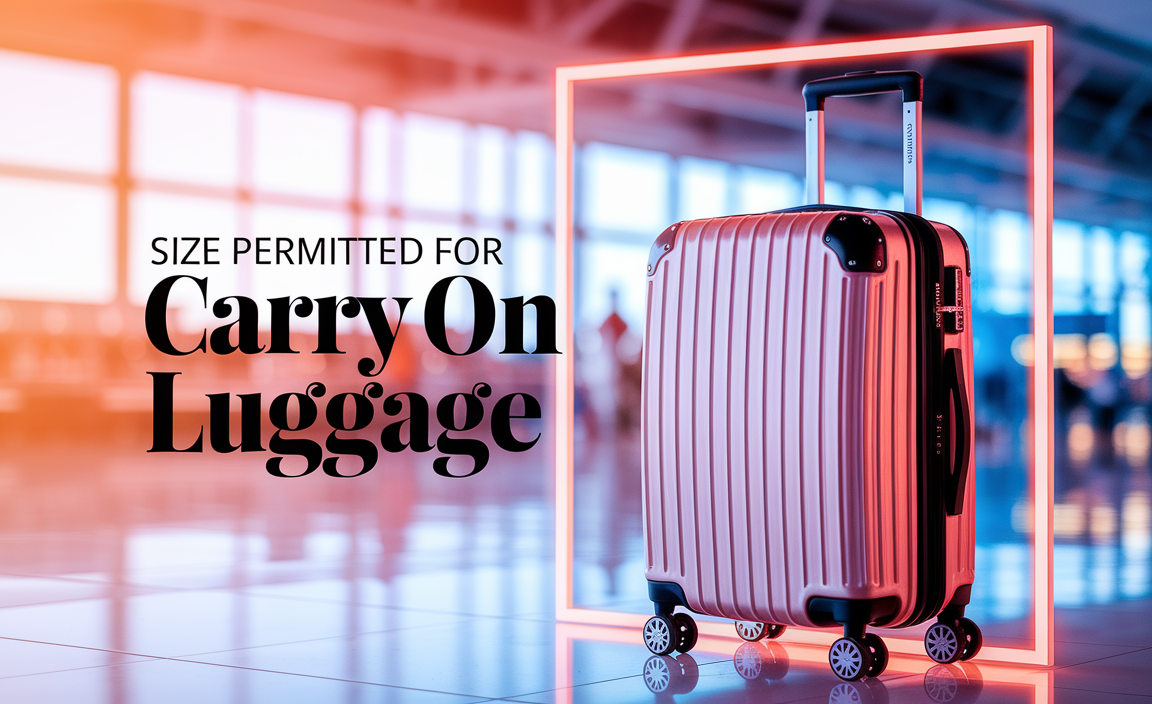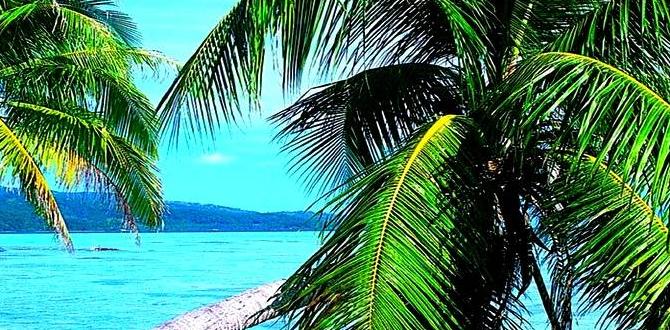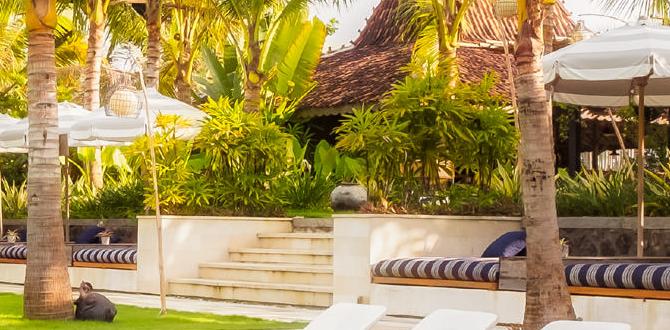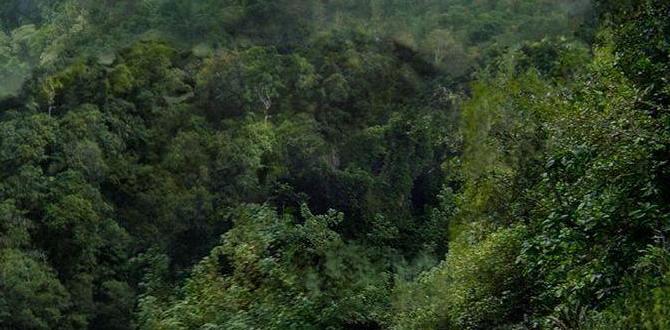Yes, Bay of Islands solo travel is incredibly rewarding! This guide provides essential tips for a safe, comfortable, and unforgettable adventure, covering everything from packing and accommodation to activities and local insights.
Planning a solo trip to the beautiful Bay of Islands can feel a bit daunting at first. You want to experience the stunning coastlines, charming towns, and rich history all by yourself. It’s totally achievable and can be one of the most freeing travel experiences you’ll have. Don’t let any worries hold you back! We’re here to break down exactly how to make your Bay of Islands solo adventure smooth and stress-free.
From finding the perfect place to stay to knowing what to pack and how to stay connected, we’ve got you covered. Get ready to discover the magic of the Bay of Islands, your way. Let’s dive into the essential tips that will prepare you for an amazing solo journey.
Your Bay of Islands Solo Adventure: A Comprehensive Guide
The Bay of Islands, nestled in New Zealand’s Northland, is a paradise of sparkling blue waters, golden beaches, and lush islands. It’s a dream destination for many, and traveling solo here offers a unique opportunity for self-discovery and immersion into a breathtaking natural environment. As a solo traveler, you have the flexibility to set your own pace, chase the moments that speak to your soul, and truly connect with your surroundings. This isn’t just about ticking off sights; it’s about creating an experience that’s uniquely yours.
To ensure your solo trip is as enriching and seamless as possible, we’ve compiled a list of essential tips. These practical insights will help you navigate your journey with confidence, from arrival to departure. Let’s get you ready for an unforgettable solo adventure in this spectacular part of New Zealand.
Bay of Islands Solo Travel: Quick Summary
Bay of Islands solo travel is easy and safe. Focus on booking accommodation in advance, using reliable transport like ferries and buses, and participating in group tours for activities. Stay connected with a local SIM card, pack light essentials, and embrace the friendly atmosphere. Prioritize your safety with common sense and enjoy the freedom to explore at your own pace.
Why The Bay of Islands is Perfect For Solo Travelers
The Bay of Islands truly shines as a destination for those venturing out on their own. It’s renowned for its incredibly safe environment and the genuine warmth of its locals. You’ll find that New Zealanders are generally very friendly and helpful, making it easy to ask for directions or strike up a conversation. The region’s compact nature means many key attractions are accessible, and there’s a wealth of organized tours and activities designed for various interests.
This makes it simple to join group excursions, providing both companionship and structured exploration without the pressure of organizing everything yourself. Whether you’re interested in marine life, history, or simply soaking up the sun on a secluded beach, the Bay of Islands offers a diverse landscape of experiences that cater exceptionally well to the solo explorer.
Essential Planning Before You Go
Getting your trip planning right is key to a stress-free solo adventure. Taking a little time upfront can save a lot of hassle and ensure you’re maximizing your experience.
Booking Accommodation Wisely
As a solo traveler, your accommodation choice significantly impacts your experience. You want a place that feels safe, comfortable, and perhaps offers opportunities to meet other travelers if you wish. Booking in advance is highly recommended, especially during peak season (December to February).
- Hostels: Many hostels in Paihia and Russell offer both dorm rooms and private rooms. They are excellent for budget travelers and those looking to socialize. Look for ones with good reviews for cleanliness and atmosphere.
- Motels and Hotels: These provide more privacy and comfort. Paihia and Kerikeri have a good range of options. Booking a room with a kitchenette can also be a cost-saver for meals.
- Bed & Breakfasts (B&Bs): For a more personal touch and local insight, B&Bs are a fantastic choice. You often get a hearty breakfast included, and the hosts can offer invaluable local tips.
- Airbnb: This can offer unique stays, from private rooms in local homes to entire apartments. It’s a great way to get a feel for a neighborhood. Remember to read reviews carefully.
Tip: When booking, check the location. Being close to ferry terminals or bus stops can save you time and money on local transport.
Transportation In and Around the Bay
Navigating the Bay of Islands is generally straightforward. The main hubs are Paihia, Kerikeri, and Russell.
- Getting There: Most travelers arrive by bus or car. InterCity buses run regularly from Auckland to Paihia and Kerikeri. If driving, ensure your vehicle is in good condition for the journey.
- Getting Around:
- Ferries: Ferries are essential for hopping between Paihia and Russell, and services to Urupukapuka Island are also available. The Russell-Paihia ferry is frequent and a scenic journey.
- Local Buses: Limited local bus services operate, primarily connecting Paihia, Kerikeri, and sometimes Waitangi. Check schedules as they can be infrequent.
- Rental Cars: Renting a car offers the most flexibility, especially if you plan to explore beyond the immediate coastal towns. Companies are available in Kerikeri and sometimes Paihia.
- Tours and Shuttles: Many activities include pick-up, and shuttle services can be booked for day trips or to reach specific trailheads.
Tip: If you are reliant on public transport, plan your itinerary around bus and ferry schedules. Consider day tours for convenience if your independent travel options are limited.
Budgeting for Your Trip
The Bay of Islands can be as budget-friendly or as luxurious as you wish. Solo travel can sometimes be more expensive per person due to not splitting costs, but smart choices can balance this.
| Category | Estimated Daily Cost (NZD) – Budget | Estimated Daily Cost (NZD) – Mid-Range |
|---|---|---|
| Accommodation (Hostel/Budget Motel) | $40 – $80 | $100 – $200 |
| Food (Self-catering/Cafes) | $50 – $80 | $80 – $120 |
| Activities (Day tours, entry fees) | $70 – $150 | $150 – $300 |
| Local Transport | $10 – $30 | $20 – $50 |
| Miscellaneous (Souvenirs, extras) | $20 – $40 | $30 – $60 |
| Total Estimated Daily Cost | $190 – $380 | $380 – $730 |
Please note: These are estimates and can vary greatly based on your choices and the season. It’s always wise to add a buffer for unexpected expenses.
Packing Essentials For the Bay
Packing light is always a good idea for solo travel, especially if you’re moving between locations. Focus on versatile items.
- Clothing:
- Lightweight, quick-drying layers are best. Think t-shirts, long-sleeved tops, and a fleece.
- Waterproof and windproof jacket – the weather can change quickly.
- Comfortable walking shoes or sturdy trainers.
- Sandals or flip-flops for beach days and casual wear.
- Swimsuit is a must!
- A slightly smarter outfit if you plan to dine at nicer restaurants.
- Sun Protection: High SPF sunscreen, a wide-brimmed hat, and sunglasses are crucial. The New Zealand sun is strong.
- Insect Repellent: Especially important for evenings or if you plan to hike in bush areas.
- Toiletries: Travel-sized items are ideal. Consider any personal care needs, like comfortable, discreet adult diapers or protective underwear, for added confidence and peace of mind during long travel days or outdoor explorations, ensuring comfort and discretion throughout your trip.
- Health & Safety: A small first-aid kit (band-aids, antiseptic wipes, pain relievers), any personal medications, hand sanitizer.
- Electronics: Phone and charger, portable power bank, camera, adapter if needed.
- Documents: Passport, driver’s license, travel insurance details, booking confirmations. Keep digital copies.
- Daypack: Essential for carrying water, snacks, sunscreen, and a jacket on day trips.
- Reusable Water Bottle: Stay hydrated and reduce plastic waste.
Tip: Roll your clothes instead of folding them to save space and reduce wrinkles in your luggage.
Making The Most of Your Solo Experience
The Bay of Islands offers a unique blend of natural beauty and engaging activities that are perfect for solo exploration. Embrace the freedom and tailor your days to your interests.
Top Solo-Friendly Activities
Many activities in the Bay of Islands are perfectly suited for individuals. Joining tours is a great way to see the sights and potentially meet fellow travelers.
- Boat Tours to Hole in the Rock: This is a quintessential Bay of Islands experience. Several operators offer trips, often including stops at islands for swimming or exploring. It’s a fantastic way to see the dramatic coastline and marine life. You’ll be surrounded by people, making it a comfortable environment for solo travelers.
- Kayaking and Paddleboarding: Rent a kayak or paddleboard from Paihia or Russell and explore the calm bays at your own pace. It’s a peaceful way to connect with the water and enjoy secluded beaches.
- Hiking and Walking Trails:
- Waitangi Treaty Grounds: A must-visit for understanding New Zealand’s history. You can explore independently or join a guided tour.
- Paihia to Opua Coastal Walk: An easy, scenic walk offering lovely views.
- Urupukapuka Island Conservation Park: Accessible by ferry, this island offers several beautiful walking tracks with stunning vistas and opportunities for swimming.
- Historical Exploration in Russell: Wander through the charming streets of Russell, New Zealand’s first capital. Visit the Russell Museum and St. Paul’s Church.
- Day Trip to Cape Reinga: While a bit further afield, many organized bus tours go to Cape Reinga, the northernmost point of New Zealand. It’s a long day but a spectacular journey, especially for lighthouse enthusiasts.
- Dolphin Watching and Swimming Tours: Get up close with marine life. These tours are usually group-oriented, making them ideal for solo visitors.
Staying Connected and Safe
Safety and staying in touch are paramount when traveling solo. The Bay of Islands is considered very safe, but standard precautions still apply.
- Inform Someone of Your Plans: Let a friend or family member back home know your itinerary, and check in regularly.
- Trust Your Instincts: If a situation feels uncomfortable, remove yourself from it.
- Emergency Services: In New Zealand, the emergency number is 111.
- Local SIM Card: Purchase a local SIM card upon arrival (e.g., Spark, One NZ, 2degrees). This is relatively inexpensive and ensures you can easily make calls, use data for maps, and message home. You can often buy these at the airport or in Kaitaia, or larger towns like Kerikeri.
- Download Offline Maps: Use apps like Google Maps or Maps.me and download the New Zealand map for offline navigation, as phone signal can be spotty in some remote areas.
- Be Aware of Your Surroundings: Especially at night or in less populated areas.
- Travel Insurance: Ensure you have comprehensive travel insurance that covers medical emergencies and lost belongings. Reputable providers can be found through comparison sites like iCanCompare (a New Zealand-based comparison service).
- Carry a Portable Charger: Essential for keeping your phone powered for navigation, communication, and emergencies.
Eating and Drinking Solo
Dining alone can be a joy rather than a chore! The Bay of Islands has plenty of options.
- Cafes: Many cafes are relaxed and perfect for a solo brunch, coffee, or light lunch.
- Pubs: Local pubs often have a friendly atmosphere and serve hearty meals. Sitting at the bar can be a relaxed way to eat and people-watch.
- Waterfront Restaurants: Enjoy a meal with a view. Many have outdoor seating, which can feel less conspicuous when dining alone.
- Self-Catering: If your accommodation has kitchen facilities, shopping at local supermarkets (like Countdown or New World) and preparing some of your own meals is a great way to save money and eat healthily. Pick up some local produce from a farmers market if you see one!
- Food Trucks and Takeaways: For a casual bite, these are readily available in main towns.
Tip: Don’t be afraid to ask restaurant staff for a table for one. They are accustomed to solo diners.
Connecting With Others (If You Choose)
Even as a solo traveler, you might enjoy some social interaction. The Bay of Islands is a great place to find it.
- Hostels: Common areas in hostels are designed for socializing.
- Group Tours: Boat tours, bus trips, and guided walks are excellent opportunities to meet people with similar interests.
- Local Events: Check local notice boards or community pages for events, markets, or talks happening during your stay.
- Be Open and Approachable: A smile and a friendly greeting can go a long way in starting conversations with other travelers or locals.
Destination Spotlight: Key Towns
Understanding your base towns will help you plan your exploration.
Paihia
Paihia is the main tourist hub and a bustling waterfront town. It’s the gateway to many boat tours and offers a wide range of accommodation, restaurants, and shops. It’s a convenient base for accessing nearby attractions like the Waitangi Treaty Grounds.
Russell
Just a short ferry ride from Paihia, Russell is a historic and charming Victorian-era town. It feels more tranquil and has a delightful waterfront, boutique shops, and eateries. It’s a great place to explore on foot and soak in the history.
Kerikeri
A little further inland, Kerikeri is the largest town in the region and known for its artistic community, historic Stone Store, and vibrant cafes and galleries. It’s a good base if you plan to explore more of the Northland hinterland.
Waitangi
Home to the Waitangi Treaty Grounds, the birthplace of New Zealand. It’s a significant cultural and historical site that is easily accessible from Paihia.
Ethical and Sustainable Travel in the Bay
The Bay of Islands is a precious natural environment. Traveling responsibly ensures it remains beautiful for generations to come.
- Respect Wildlife: Maintain a safe distance from marine mammals and seabirds. Never feed them.
- Minimize Waste: Use reusable water bottles and coffee cups. Dispose of rubbish properly, and recycle where possible.
- Support Local: Choose locally owned accommodation, cafes, and tour operators. Purchase souvenirs from


